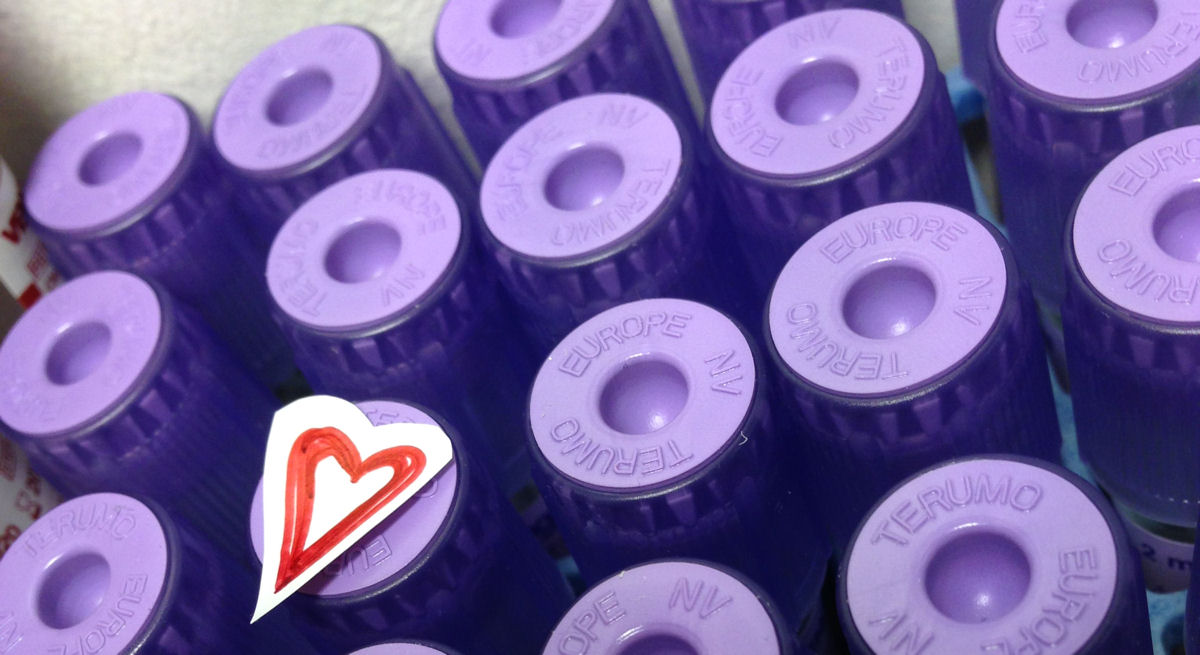Challenge of Improved Outcomes in Diabetes Care

Abstract – www.labqualitydays.com
Role of Laboratories
 Timo Kouri, MD PhD, Senior Physician (HUS)
Timo Kouri, MD PhD, Senior Physician (HUS)
Role of clinical laboratories is focused on accuracy and traceability of multiple measurements used to treat diabetes patients. This activity is officially described in ISO 15189:2013 standard (Medical laboratories. Requirements for quality and competence), and a parallel ISO 22870:2016 standard (Point-of-care testing – Requirements for quality and competence) and includes sharing the responsibility of purchasing such tools, support of training and quality systems, participation in electronic transfer of patient data both to laboratory information systems and to electronic patient records.
Diagnosis of diabetes mellitus can be made from plasma glucose concentration (fasting >7.0 mmol/l, random > 11.1 mmol/l), based on oral glucose tolerance test (WHO criteria 2006), or also by blood haemoglobin A1c assay (ADA criteria 2017). These find partially different patient populations, and have different benefits and pitfalls. It is useful to remember that even the most stringent, traceable HbA1c measurement has a combined preanalytical and analytical uncertainty of 3% – 5%, depending on the regional accuracy of analyses, allowing a minimum significant difference of 8-16% between two sequential measurements to be detected only.
Traceability chain of glucose measurements is a continuum from results of laboratory instruments to point-of-care (POC) devices used by health-care professionals, to self-monitoring blood glucose (SMBG) measurements, and finally to continuous glucose monitoring with typically subcutaneous sensors predicting plasma glucose concentrations from interstitial fluid in 5 min intervals. Added inaccuracy in each step must be understood, including uncertainties related to the measurement principles. Requirements of SMBG have recently been revised in ISO 15197:2013 standard, now stating that 95% of SMBG results must be within +/- 15% (> 5,6 mmol/l P-Glucose) or +/- 0,83 mmol/l (< 5,6 mmol/l P-Glucose) as compared to the reference measurement. Out of all results, 99% should fit into the Parkes’ consensus error grid area A or B. There is a Scandinavian professional group providing assessments of POC devices (skup.nu), including glucometers, as requested, e.g., by manufacturers.
Continuous glucose monitoring systems are currently under heavy technical development, with several new sensors and insulin pumps being introduced into the market. The shown improvements in long-term glycemic control, associated with prevention of hypoglycemia episodes make the patients ask for more in their quality of life and in reimbursements of societies. Measurement principles of interstitial fluid (or tissue fluid, Tf) glucose need to take into account the delay following changes from P-Glucose. They may still be sensitive to partial oxygen pressure and perfusion in subcutaneous tissue, may suffer from non-specific interferences (such as vitamin C, uric acid, drugs), or may be covered by biofilms related to foreign bodies, and need then confirmatory calibrations into their algorithms. The accuracy unit mean absolute relative difference (MARD) is about 0,8 x CV (coefficient of variation) without a known mean value. It must be understood that a maximum allowable MARD is 6% if the quality specification for CGM is +/- 15%. Despite the promises, CGM devices cannot be used in treating severely ill hospital patients. Non-adjacent use of CGM (without SMBG measurements) also deserves a warning because of unawareness of hypoglycemia symptoms in about 25% of patients.
Ketosis of diabetic patients deserves active attention both in adults and paediatric patients. Hospital laboratories provide plasma hydroxybutyrate testing, that is also available in a POC device. Traditional Legal’s test (such as in urine test strip) is no more recommended, since it detects acetoacetate.
Glucosuria awareness has become more important due to more stringent targets of glycemic control. Reduced renal threshold of glucose that gives rise to glucosuria may confuse estimates of insulin dosing. Conventional test strip is fairly reliable and quantitative in providing estimates of daily glucose excretion.
Clinician´s view
 Jorma Lahtela, MD, PhD, Adjunct prof., Senior Physician (Tampere University Hospital, Finland)
Jorma Lahtela, MD, PhD, Adjunct prof., Senior Physician (Tampere University Hospital, Finland)
Diabetes mellitus (DM) is currently spreading in an epidemiologic manner all over the world, close to 8.5% of population in Western countries having the condition. Roughly 80% of these patients have type 2 diabetes with no precise diagnostic criteria except for diabetes itself. Diabetes is currently diagnosed among younger and younger individuals, necessitating life-long treatment and follow-up. Health care burden comes from several long-term complications affecting micro and macro arteries. Also effect on life quality is huge.
Generally, DM means elevated blood glucose level. Consensus diagnostic criteria for diabetes have been agreed by WHO in 1999, using cut-off points based on epidemiologic data on complications, mainly diabetic retinopathy. Criteria include fasting plasma glucose, 2 h post load values and random glucose. Categories include impaired fasting and postprandial glucose metabolism, and DM, in addition to normal metabolism. Oral glucose tolerance test (OGTT, 75 grams glucose orally) is done according to WHO’s recommendation. During pregnancy, cut-off values differ from those for non-pregnant individuals. There are also some region-specific protocols and cut-off values. Diagnosis of DM, as well as detecting individuals on risk, is important for the society. Thus, tests done with high quality and reproducibility are mandatory.
Due to the costs of OGTT, glycated hemoglobin (HbA1c) was accepted as a diagnostic tool in 2011 by WHO. Benefits are single sampling, lower costs (lost working hours) and longer timeframe for glucose levels. Errors on HbA1c values include both analytical factors and patient dependent factors. The most important patient dependent factor is lifespan of red blood cells that is difficult to measure. OGTT and HbA1c criteria find partly different patients, when used for screening purposes.
Treatment of DM depends on the severity of the condition. Several classes of oral and injectable drugs are available. Measurement of blood glucose (BG) is one of the cornerstones and the frequency needed depends on several factors. Self-monitoring is currently almost the only method in ambulatory care, where results from central laboratories are rarely needed (unlike diagnostic phase, or when DM patients have been hospitalized due to other severe diseases). For over 20 years, capillary BG measurement has been the only way needing invasive procedure each time. Tremendous development has improved the meters, turned the prices down and improved both memory and algorithm base instruction programs (bolus calculators). Data handling by computer and saving to servers is more common making it possible to share the data with professionals, fellow diabetics, parents etc.
Bloodless (optical) plasma glucose measurement has been a challenge for decades but remain still a dream. Continuous glucose sensors have been available over ten years. A sensor needs invasive application to subcutaneous tissue, measures interstitial fluid glucose and is measuring glucose-related signals for 2-4 weeks. Some sensors need calibration twice per day, while some others are factory calibrated. Reading of results may include near-field wireless communication (e.g. flash sensor) into the data-saving device that contains sophisticated analysis properties including bolus calculator, food and exercise analysis and learning properties. Alarms for low and high blood glucose values can be set. Data transmission to smartphone is possible as well as sharing data with others (like parents).
Deviations from BG may appear from the delays of glucose concentration from blood/plasma to interstitial fluid, when changes are rapid (like after a meal). Sensor-based BG is mainly used by type 1 diabetics who fully depend on external insulin. Some studies have shown improvement of glycemic control sufficient to delay or prevent long-term complications. Latest innovation for clinical use is an implantable sensor that can be used several months. Glucose concentration is read externally (e.g. smartphone). Experiences are still few. Costs of the continuous glucose monitoring are significantly higher than those of fingertip BG. Also, some patients (20-30%) do not like to use a sensor for various reasons.
Follow-up of the patients and detection of acute and late complications needs other laboratory methods. Absolute deficiency of insulin leads to fatty acid metabolism and production of ketone bodies. Finally system acidosis can be life threatening. Some of the patients with type 1 DM monitor ketones (β-hydroxybuturate) from their fingertip. This has become more important after introducing a group of SGLT2 drugs (sodium/glucose cotransporter 2 inhibitors) causing occasionally normoglycemic ketoacidosis and renal glucosuria. Microangiopathy is monitored by measuring albumin excretion to urine, either from a timed urine collection or albumin creatinine ratio from single sample.
International Congress on Quality in Laboratory Medicine
8-9 February, 2018 Helsinki
Welcome to Helsinki and Labquality Days to see in live this extremely interesting presentation. The 2018 congress scientific program deals with quality issues of laboratory medicine and advanced healthcare technologies. Two inspiring days with world class speakers will guarantee an unforgettable experience.


